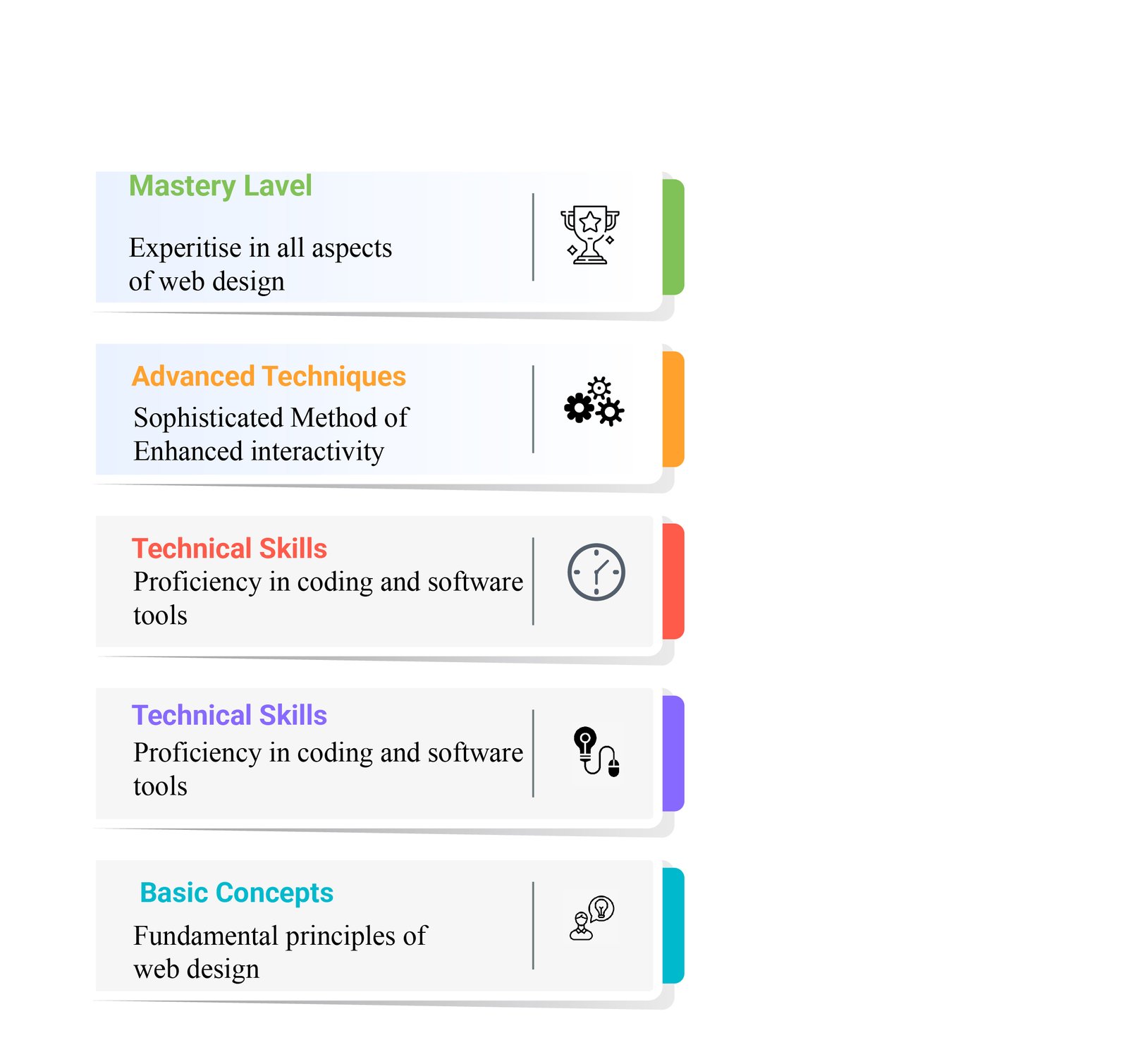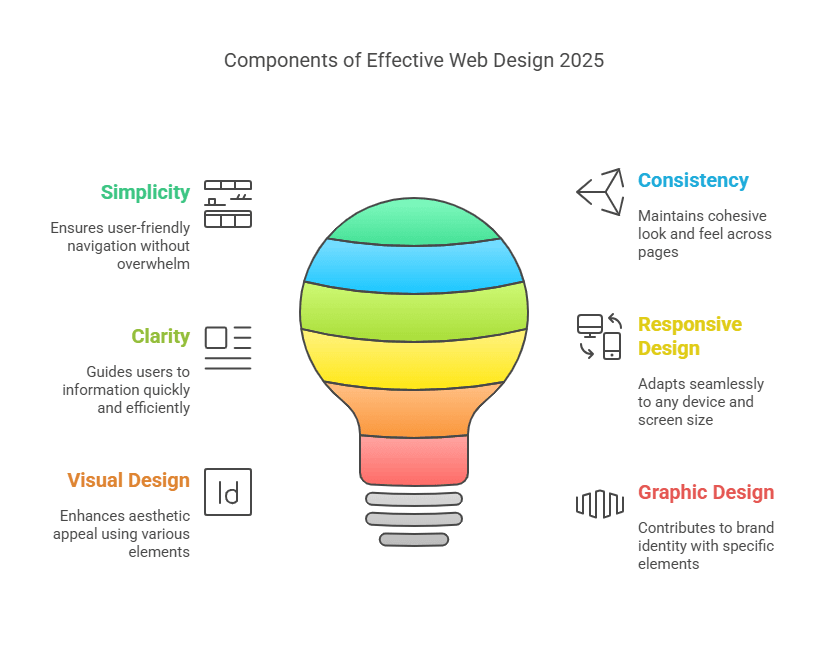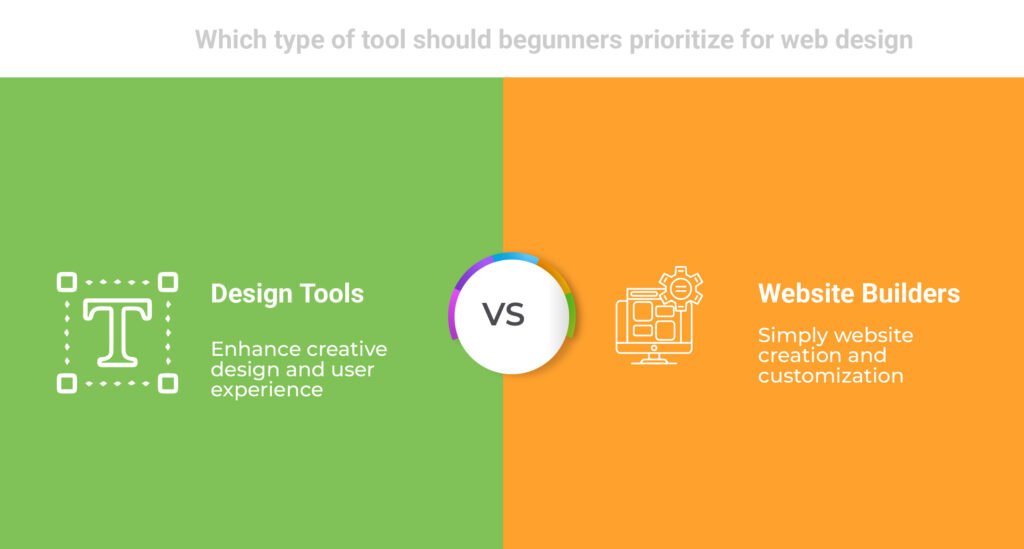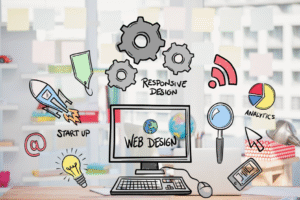In the rapidly evolving digital landscape, web design continues to be a crucial skill for creating engaging and functional websites. As we approach 2025, understanding the fundamentals of web design becomes essential for anyone looking to enter this dynamic field. This comprehensive guide aims to equip beginners with the knowledge needed to navigate the world of web design, from grasping the basic concepts to exploring advanced techniques and tools.

What is Web Design?
Understanding the Basics of Web Design
Web design is the art and science of creating aesthetically pleasing and functional websites. It involves strategically using design elements such as layout, colour schemes, typography, and imagery to seamlessly guide users through a website. A well-designed website not only attracts visitors but also ensures they have a positive user experience. In 2025, web design is not just about making a website look good; it’s about creating a digital environment that is intuitive and accessible to all users, leveraging the latest technologies and design principles.
The Role of a Web Designer
A web designer is responsible for a website’s visual aspects. Their role involves crafting the layout, selecting appropriate colour palettes, and ensuring the site’s navigation is user-friendly. In addition to aesthetic considerations, web designers must consider the site’s functionality, ensuring it is responsive and accessible across various devices. As we move into 2025, the role of a web designer is expanding to include knowledge of web development and understanding how design choices impact a website’s performance and user engagement.
Difference Between Web Design and Web Development
While web design and web development are often used interchangeably, they refer to different aspects of the website creation process. Web design focuses on a site’s visual and experiential elements, while web development involves the coding and technical implementation that brings the design to life. In 2025, the lines between these roles are blurring, with many professionals developing skills in both areas to be more versatile in the digital marketplace. Understanding this distinction is crucial for beginners who wish to specialize in either field or become proficient in both.

Essential Elements of Web Design in 2025
Key Design Principles for Effective Web Design
Effective web design in 2025 revolves around key principles such as simplicity, consistency, and clarity. Simplicity ensures that users can navigate a website without feeling overwhelmed, while consistency in design elements like fonts and colours helps maintain a cohesive look and feel across all pages. Clarity in layout and content guides users to the information they seek quickly and efficiently. By adhering to these principles, designers create websites that look professional and function smoothly, enhancing the overall user experience.
Importance of Responsive Web Design
Responsive web design is paramount in 2025, as users access websites from various devices with varying screen sizes. A responsive design ensures a website adapts seamlessly to any device, providing an optimal viewing experience. This approach improves usability and enhances a site’s search engine ranking, as search engines prioritize mobile-friendly sites. For beginners, mastering responsive design is essential to creating websites that meet the expectations of today’s tech-savvy users.
Incorporating Visual Design and Graphic Design
Visual design and graphic design play critical roles in web design by enhancing a site’s aesthetic appeal and functionality. Visual design focuses on the overall look and feel, using elements like colour, typography, and imagery to create an engaging user experience. Graphic design, on the other hand, involves creating specific visual elements, such as logos and icons, that contribute to a site’s brand identity. In 2025, blending these disciplines is key to crafting visually stunning websites that captivate and retain users.

Tools and Resources for Web Development and Design
Top Web Design Tools for Beginners
Having the right tools is crucial for beginners venturing into web design. In 2025, popular web design tools include Adobe XD, Figma, and Sketch, which offer intuitive interfaces for creating and prototyping designs. These tools provide a range of features that simplify the design process, allowing users to experiment with layouts, colours, and typography. By mastering these tools, beginners can efficiently translate their creative ideas into professional web designs that meet modern standards.
Choosing the Right Website Builder for Your Needs
Website builders are invaluable for beginners looking to create a website without extensive coding knowledge. Platforms like Wix, Squarespace, and WordPress offer user-friendly interfaces and a variety of templates to kickstart the website creation process. In 2025, choosing the right website builder involves considering factors such as ease of use, customization options, and scalability. By selecting a builder that aligns with their goals, beginners can efficiently develop functional and visually appealing websites.
Utilizing Design Tools for Website Creation
Design tools are essential for crafting professional web designs. Tools like Canva and Adobe Creative Suite offer many resources for creating stunning visuals, from custom graphics to engaging multimedia content. In 2025, utilizing these tools effectively means understanding and applying their capabilities to enhance the user experience. For beginners, mastering design tools streamline the website creation process and elevates the quality of their digital projects, making them stand out in a competitive market.

The Web Design Process: Step-by-Step
Planning and Development Process
The web design process begins with thorough planning, which involves understanding the target audience, defining the site’s purpose, and outlining the content structure. This phase is crucial for setting the foundation of a successful website. The development process follows, where designers and developers collaborate to bring the design to life through coding and technical implementation. In 2025, a well-executed planning and development process ensures that the final product meets user needs and achieves business objectives.
Creating an Adaptive Web Design
Adaptive web design involves creating sites that provide a tailored user experience across different devices. Unlike responsive design, which adjusts fluidly, adaptive design involves creating multiple fixed layouts optimized for specific screen sizes. In 2025, this approach will ensure that users have a consistent experience regardless of the device they use. For beginners, understanding adaptive design principles is key to developing websites that cater to diverse user preferences and technological capabilities.
Ensuring Accessibility in Web Design
Accessibility in web design is about ensuring that websites are usable by everyone, including individuals with disabilities. Adhering to the Web Content Accessibility Guidelines (WCAG) is essential for creating inclusive digital environments. In 2025, accessibility will be not just a legal requirement but a moral imperative for web designers. By incorporating features like alt text for images, keyboard navigation, and readable fonts, designers can create accessible websites for a broader audience, enhancing user satisfaction and engagement.

The Future of Web Design Beyond 2025
Emerging Trends in Web Design
As we look beyond 2025, emerging trends in web design are set to transform the digital landscape. Trends such as dark mode, immersive 3D visuals, and voice user interfaces are gaining popularity, offering new ways to engage users. Keeping up with these trends is crucial for web designers who want to remain relevant in a rapidly changing industry. By embracing these innovations, designers can create cutting-edge websites that captivate users and set new standards for digital experiences.
The Role of AI and Automation in Web Development
Artificial intelligence (AI) and automation revolutionize web development by streamlining processes and enhancing user experiences. In 2025, AI-powered tools can assist in design generation, content personalization, and user behaviour analysis. Automation simplifies repetitive tasks, allowing designers to focus on creativity and strategy. For beginners, understanding the role of AI in web development is essential to leverage these technologies effectively and create more innovative, more efficient websites.
Preparing for Changes in Website Layout and Interface Design
Website layout and interface design constantly evolve to meet user expectations and technological advancements. In 2025, designers must anticipate changes in user behaviour and adapt their designs accordingly. This involves staying informed about new design patterns, interaction models, and interface technologies. Preparing for these changes means being open to learning and experimentation for beginners, ensuring that their designs remain innovative and user-centric in a fast-paced digital world.

Frequently Asked Questions (FAQs)
Web design is the process of creating a website’s visual layout and functionality. It’s important because good web design ensures that a website is user-friendly, visually appealing, and effective in communicating its message to visitors.
The key web design principles include balance, contrast, emphasis, consistency, and unity. These principles of design help create a coherent and visually pleasing web page that enhances user experience.
The main types of web design include static, dynamic, responsive, and adaptive design. Each type has its advantages and is chosen based on the website’s specific needs and its users.
Web design focuses on a website’s aesthetics and usability, while web development involves coding and building the website’s functionality. Both are crucial in the website development process.
A good web design is visually appealing, easy to navigate, and responsive. It should cater to the needs of its users and ensure the website performs well across different devices and browsers.
To start your web design journey, familiarize yourself with design tools that allow you to create layouts, learn the basics of HTML and CSS, and study web design principles. A beginner’s guide or a complete guide for 2025 can also be invaluable.
A web developer takes the design specifications created by designers and turns them into a functional website. They handle the coding and technical aspects of website development.
Responsive design is crucial because it ensures a website looks and functions well on all devices, from desktops to smartphones. This adaptability improves user experience and helps a website rank higher in search results.
To make your website more user-friendly, focus on straightforward navigation, fast loading times, and clear calls to action. It is also essential to ensure the website is accessible to all users, including those with disabilities.
A web design agency offers various services, including creating custom layouts, developing responsive designs, and optimizing websites for search engines. They can guide you through the entire design and development process.




